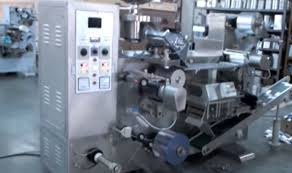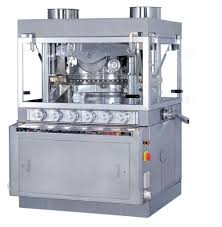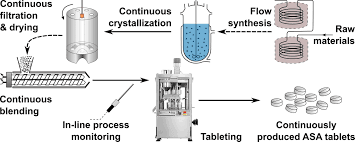Understanding and Preventing Tablet Twinning Defects in Pharmaceutical Manufacturing

Getting your Trinity Audio player ready...
|
Understanding and Preventing Tablet Twinning Defects in Pharmaceutical Manufacturing
Tablet twinning is a common issue encountered in the pharmaceutical industry, particularly during the coating process of tablets. This defect is most frequently observed with capsule-shaped tablets, where two tablets inadvertently stick together during production, resulting in a pair of conjoined tablets resembling twins. This occurrence can compromise the quality of the tablet coating, affecting the overall consistency of the final product and potentially altering the efficacy of the drug. Addressing tablet twinning requires a detailed understanding of its causes and implementing effective solutions. This article provides insights into the factors contributing to twinning and the technical adjustments that can be made to prevent such defects from compromising tablet quality.
What is Tablet Twinning?
Twinning refers to the phenomenon where two tablets stick together during the coating process, often due to excessive moisture, improper drying, or contact between tablets during the production cycle. It is a serious concern because it affects the uniformity of the coating, which can directly impact the therapeutic performance of the tablet. A uniform coating is crucial for controlling the release of the active pharmaceutical ingredients (APIs) and ensuring the correct dosage is delivered to the patient.
In a typical tablet coating process, tablets are rotated in a pan while a coating solution is sprayed onto their surface. The tablets are exposed to air to dry the coating material, which forms a protective layer around the tablet. However, if the coating process is not carefully controlled, tablets can become over-wetted, causing them to stick together and form a clump. Once twinned, the tablets are difficult to separate without damaging the coating, which can result in tablets that are unfit for use or require rework, leading to delays and increased production costs.
Causes of Tablet Twinning
Several factors contribute to the occurrence of tablet twinning. Understanding these causes is essential for implementing effective preventive measures. These causes include:
1. Tablet Design
The shape and design of the tablet play a significant role in the likelihood of twinning. Capsule-shaped tablets, which have curved edges and a relatively flat surface, are particularly susceptible to sticking together. The flat surface provides more area for contact between tablets, making it easier for them to adhere to each other during the coating process. Additionally, if the tablet is not perfectly smooth, small imperfections or rough edges may increase the chance of tablets sticking together.
2. Coating Formulation
The composition of the coating material itself is another critical factor. Coatings that are excessively sticky or have poor drying properties can make the tablets prone to sticking together. Certain excipients, like binders or plasticizers, might contribute to the stickiness, making it more difficult for the tablets to dry quickly and evenly. This results in an increased chance of the tablets sticking together, leading to twinning.
3. Solvent Drying
The drying rate of the solvent used in the coating process is crucial. If the solvent evaporates too slowly, the tablets will remain wet for a longer period, increasing the likelihood of twinning. On the other hand, if the drying rate is too fast, it may cause uneven coating, leading to defects. The temperature and airflow around the tablet bed must be carefully regulated to maintain an optimal drying environment. Poor drying conditions can result in over-wetting, which can cause the tablets to stick together.
4. Spray Dynamics
The spray dynamics, including the spray rate and the size of the droplets, are key factors in controlling the coating process. If the spray rate is too high, the tablets may become over-wetted, leading to twinning. Additionally, if the droplets produced by the spray are too large, due to insufficient air pressure, the coating may not dry quickly enough, further increasing the risk of twinning.
5. Pan Speed and Tablet Movement
The speed at which the coating pan rotates can significantly impact tablet contact time and the overall coating process. If the pan speed is too high, tablets may not be exposed to the coating material for a sufficient period, leading to uneven coating and the potential for twinning. Conversely, if the pan speed is too low, the tablets may remain in the coating solution for too long, increasing the risk of over-wetting. Adjusting the pan speed is therefore essential for maintaining the balance required to prevent twinning.
6. Spray Gun Distance
The distance between the spray guns and the tablet bed is another important factor. If the spray guns are positioned too close to the tablets, the coating material may be applied too heavily in certain areas, leading to over-wetting. When the tablets are excessively wet, they are more likely to stick together, resulting in twinning. Ensuring the spray guns are positioned at the optimal distance is crucial for preventing this issue.
Solutions to Prevent Tablet Twinning
Several technical solutions can help prevent tablet twinning by addressing the causes outlined above. These solutions focus on optimizing tablet design, improving the coating formulation, adjusting the drying process, and fine-tuning the spray dynamics.
1. Optimizing Tablet Design
One of the simplest and most effective ways to reduce the risk of tablet twinning is to modify the design of the tablets. By selecting tablet shapes that minimize flat surfaces, the contact area between adjacent tablets can be reduced. Capsule-shaped tablets with more pronounced curves along the edges are less likely to stick together compared to flatter designs. Additionally, incorporating slight changes in the tablet’s surface texture can further reduce the chances of twinning by minimizing the areas where tablets can adhere to each other.
2. Modifying Coating Formulation
The choice of coating materials and the formulation of the coating solution is another key area for preventing twinning. Coating formulations should be designed to minimize stickiness and promote even drying. The addition of drying agents or the use of less sticky excipients can improve the coating’s performance and reduce the risk of tablets sticking together. Furthermore, adjusting the viscosity of the coating solution can help control the amount of material deposited on each tablet, preventing over-wetting.
3. Controlling Solvent Drying
Controlling the drying process is crucial to preventing twinning. To ensure that the tablets dry evenly and do not become over-wet, it is essential to maintain an appropriate drying temperature and airflow. Increasing the air temperature can help speed up the evaporation of the solvent, preventing the tablets from sticking together. It is also important to monitor the spray rate and ensure that it is optimized for the specific tablet design and coating formulation. Adjusting the distance between the spray guns and the tablet bed can also help ensure that the coating material is evenly applied and that the tablets have adequate time to dry.
4. Fine-Tuning Spray Dynamics
Optimizing the spray rate and droplet size is essential for achieving a uniform coating while minimizing the risk of twinning. The spray rate should be adjusted to ensure that the tablets are not over-wetted. Additionally, controlling the droplet size by adjusting air pressure or nozzle settings can help achieve more consistent coating coverage and faster drying times, reducing the chance of twinning.
5. Adjusting Pan Speed
Adjusting the rotation speed of the coating pan can help control the amount of time the tablets are exposed to the coating material. By carefully controlling the pan speed, it is possible to ensure that the tablets are adequately coated without becoming over-wet. The pan speed should be set at a level that allows for consistent tablet movement and even distribution of the coating solution.
6. Optimizing Spray Gun Distance
Increasing the distance between the spray guns and the tablet bed can help prevent over-wetting and ensure that the coating material is applied more evenly. By positioning the spray guns further from the tablet bed, the coating substance can be more evenly distributed across the tablets, allowing them to dry properly before coming into contact with one another. Additionally, regulating the temperature of the tablet bed can further enhance the drying process and reduce the risk of twinning.
Role of Quality Control in Preventing Tablet Twinning
Quality control is a critical aspect of ensuring that the tablet coating process remains free from defects such as twinning. After the coating is applied, it is essential to visually inspect the tablets for signs of twinning. Technicians should check for tablets that are sticking together or showing uneven coatings. If any defective tablets are found, they should be removed from the production line to maintain the quality of the batch.
In addition to visual inspections, quality control teams should also perform tests to verify that the tablets meet the required specifications for appearance, size, and coating uniformity. Regular monitoring and calibration of coating equipment, spray guns, and drying systems are also necessary to ensure that the coating process remains consistent and defect-free.
Conclusion
Tablet twinning is a significant issue that can impact the quality and effectiveness of pharmaceutical products. By understanding the underlying causes of twinning and implementing the appropriate solutions, manufacturers can significantly reduce the likelihood of this defect. Optimizing tablet design, adjusting coating formulations, controlling solvent drying, and fine-tuning spray dynamics are all critical steps in preventing twinning. Additionally, rigorous quality control procedures are essential for identifying and addressing twinning issues early in the production process, ensuring that the final tablets meet the required standards for safety and efficacy.
By taking a proactive approach to tablet coating and incorporating these strategies into the manufacturing process, pharmaceutical companies can improve the consistency and reliability of their products, delivering safe and effective medications to patients worldwide.



Recent Comments